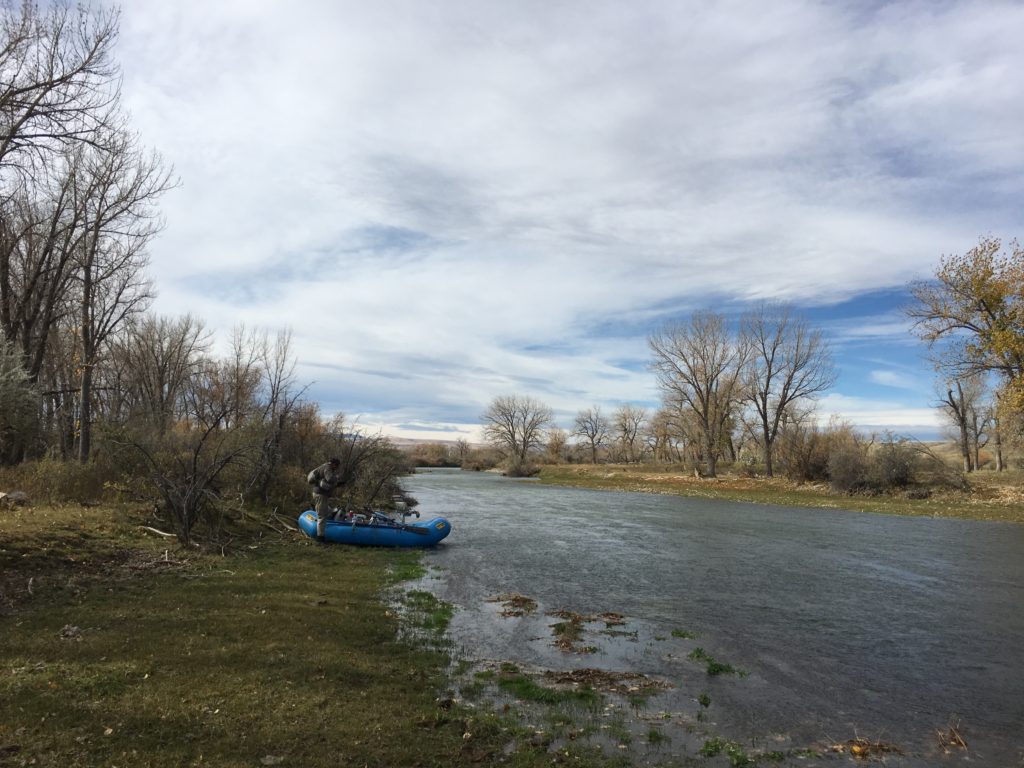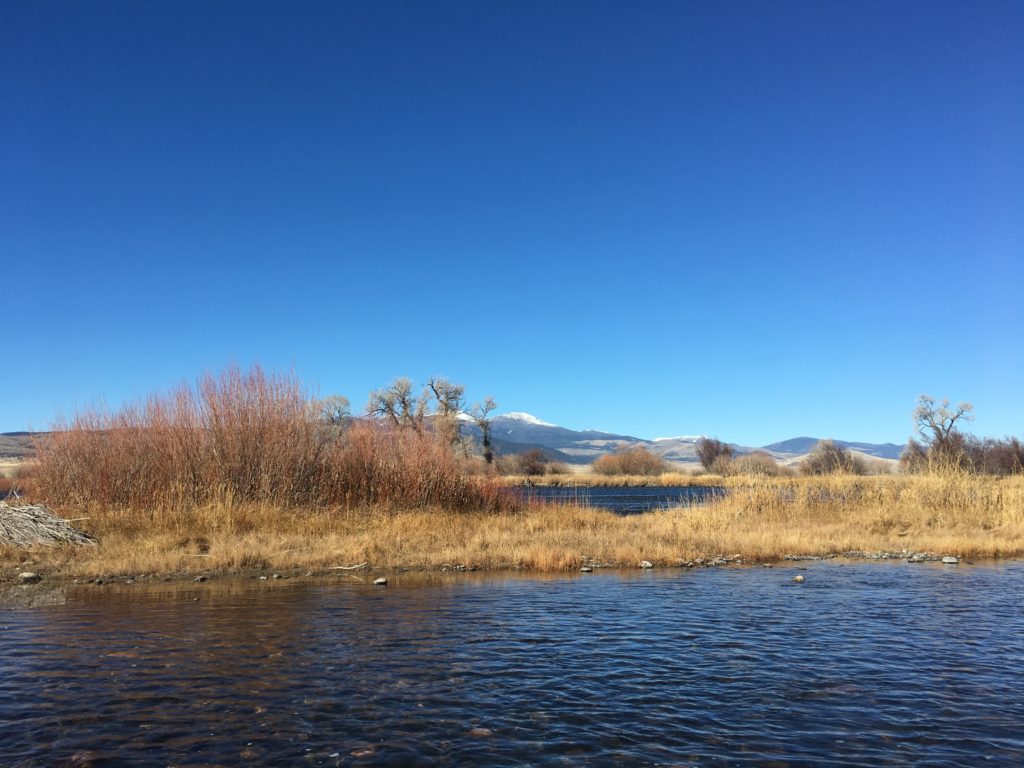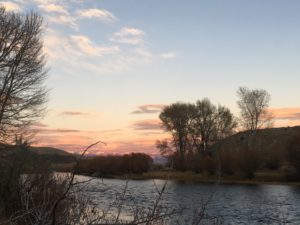There came, for a brief time in the afternoon, an impression of being completely alone on the Bighorn. Beneath a breaking sky, just the two of us, and the grey vein of the river, pushing northward toward the horizon. Upstream and down, not another boat or person in sight, a rare occurrence on a river this renowned to anglers.

Constant wind coursed downstream, leaving its choppy imprint on the river’s surface. Upstream a few miles from us, the lake above Yellowtail Dam was turning over as surface water temperatures cooled, leading to discolored water issuing from the bottom of the dam. Perhaps this combination of elements and natural phenomena helped explain the lack of other anglers that day. Whatever the reason, the solitude adds to the memory.
Below Yellowtail Dam, the Bighorn exits its eponymous mountain range and continues its course across the open plains of southeast Montana toward its confluence with the Yellowstone. Some say this countryside lacks the elemental beauty through which other Montana rivers flow.
This is Crow Indian country, and it was near here that Custer met his demise. The events of that day, and its consequences, are yet tangible, a presence that hangs in the air. At the last it must certainly have seemed to Custer and his men a remote, inhospitable place, as distant from civilization and comfort as the moon, but to my eye the river’s steady course through cottonwood-studded plains, alive with the calls of ospreys and ringneck pheasants, is one of still wild and largely uncompromised beauty.
I pinched a third split shot onto my leader to help the nymphs sink more rapidly to the bottom of the river, and cast again into the wind. Letting the line drift below me and straighten in the current, I used the tension of the water tugging at the line to load the rod and flicked the rig upstream. In this way I worked my way steadily up the side channel – tension cast, mend, let it drift downstream, tension cast again, settling in to a metronomic contemplation of the current seams, riverbed topography and indicator, pausing only occasionally to wait out an extra-strong burst of wind. After fifteen minutes the indicator dove, and I set into a lovely brown trout that stripped line from the reel, heading downstream, me in hot pursuit.
After releasing the fish, I sat on the bank amongst a cluster of small Russian olives, situated too close to the river’s edge to have survived the record high water of earlier in the year. Stripped of their color and foliage, their skeletal remains were plastered with detritus from the river – dried-out weeds, moss, mud and grasses – hanging off them in such fashion they resembled the tattered masts and rigging of some strange fleet of ghost ships, sails torn in disarray.

We floated into a deserted take out early evening, as the low sun found a sliver between earth and overcast to draw forth from the landscape a rich golden hue. Faded cottonwood leaves rattled drily in the dying breeze, the clouds above a swirl of orange and purple. We loaded the boat onto the truck then sat by the river, sipping beer while the sun dipped beyond the horizon, and the lingering twilight that is part of this corner of Montana began.



